Karen Clemmer, the Northwest community facilitator with ACEs Connection, was already deeply interested in the CDC/Kaiser Permanente Adverse Childhood Experiences Study when she and a colleague from the Child Parent Institute were invited to lunch by ACEs Connection founder and publisher Jane Stevens in 2012. But that lunch meeting changed everything.
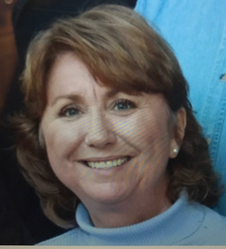
“Jane helped us see a bigger world,” says Clemmer. “She came with a much wider lens. She didn’t look only at Sonoma County, she provided context and a much greater understanding of how this [ACEs] movement was happening across the state and actually across the nation.”
“We just talked about how learning about the science of adverse childhood experiences changed our lives, our understanding about why people do what they do, and how this knowledge could flip the world,” says Stevens.
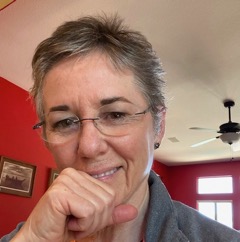
That lunch led Clemmer, who at the time was the coordinator of Maternal, Child and Adolescent Health for the Sonoma County Department of Health, and Grace Harris, then the director of the Child Parent Institute, to jump into action and launch one of ACEs Connection’s first California ACEs communities. Now, just seven years later, ACEs Connection communities are pulsing in all of the state’s 58 counties.
How did California do it? The beginning of the Sonoma County effort is instructive. Clemmer, a self-described systems-change “nudger”, circulated the bio of Dr. Nadine Burke Harris, then CEO of the Center for Youth Wellness and an ACEs science trailblazer, to fellow members of the board of the Latino Health Forum, which brought Burke-Harris in as a keynote speaker for the organization’s annual forum in 2010. Burke Harris is now California Surgeon General and ACEs science trailblazer. Clemmer and Grace Harris also worked together to raise awareness about ACEs and to integrate ACEs education into First 5’s perinatal services in 2011. So, when Clemmer and Harris organized their first meeting after the lunch with Stevens, there was already some buzz around ACEs science.
“It wasn’t a big stretch to think: Let’s explore this more,” Clemmer says.
Those First 5 employees attended the first lunch meeting at Mary’s Pizza Shack in Petaluma with a handful of other people who were interested in taking ACEs science education to the next level, recalls Clemmer.
“Over time it was like that snowball effect where you tell somebody what you’re working on and they get their own ‘aha’ moment,” says Clemmer. “And they want to join in with that work, because it just makes so much sense.”
Those meetings morphed into ACEs Science 101 presentations that Clemmer and Harris gave all over the county to health care workers, educators, and social service workers—more than 20 talks in that first year alone. They bolstered their message with multiple screenings of the groundbreaking film, Paper Tigers . More than 700 people saw the documentary, inspired by an article that Stevens wrote in 2012 that went viral with nearly one million page views. The film follows students through a year at an alternative high school in Walla Walla, WA. The documentary, by filmmaker James Redford and produced with Karen Pritzker, shows what happens to students, teachers and staff in a school when you reframe the question, “What’s wrong with you?” to “What happened to you?” Under the leadership of Principal Jim Sporleder, the entire culture of Lincoln High School shifted. Student truancy, suspensions and expulsions plummeted, and students’ grades, test scores, hope and happiness increased.
Clemmer ticks off numerous examples of how Sonoma County ACEs Connection community hardwired a lot of its ACEs work:
- All of the 40 school districts in Sonoma County included ACEs science trainings as part of mandatory professional development for staff;
- ACEs science education was woven into the county’s perinatal substance abuse treatment program;
- Valley of the Moon Juvenile Hall trained all of its staff in ACEs science and trauma-informed practices, and
- the Sonoma County Board of Supervisors elevated its own awareness, making ACES a legislative priority in 2017.
As this work and activity were kicking off in Sonoma County, a series of small revolutions around ACEs science were sparking down south all over San Diego County. Dana Brown, the organizational liaison with ACEs Connection and formerly ACEs Connection’s San Diego community facilitator, had her hand in many of those activities. In 2008, Brown had learned about ACEs science and trauma-informed practices from Dr. Stephanie Covington, who led a workshop on the subject in which she challenged those attending to infuse all of San Diego with practices that build resilience and prevent and mitigate ACEs.
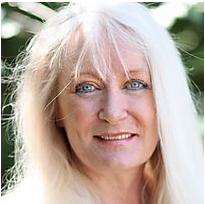
From then on, Brown was talking ACEs science and training in trauma-informed practices across sectors “to anyone who would listen,” she says. That was when she and other trailblazers in San Diego formed the countywide San Diego Trauma-Informed Guide Team (SD-TIGT). (See a timeline here about San Diego’s ACEs science work. For more about the history of SD-TIGT, see this article.) They were a group of volunteers bent on switching the mindset in San Diego from “What’s wrong with you? to What happened to you?”
Thousands of people in San Diego benefitted from that call to action through the work of the SD-TIGT. Brown alone was spreading the word to legal services for children, family health centers, universities, K-12 school districts, faith-based organizations, and social services that assist formerly incarcerated individuals. All told, since she was first introduced to ACEs science in 2008, Brown has delivered 188 presentations in ACEs science and trauma-informed practices.
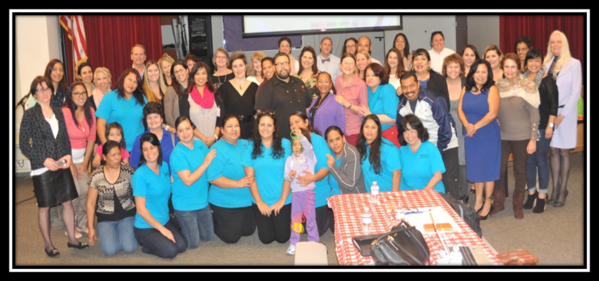
“Learning about ACEs science finally helped me make sense of my own life,” says Brown. “I thought, oh my god, everybody needs to know this!”
Brown credits Dawn Griffin, PhD., the program director of the Psychology & Criminal Justice Program at Alliant International University and a leader in trauma-informed systems integration for introducing her to the landmark ACE Study.
San Diego County stands out as a trendsetter around ACEs science. It was, after all, the county where Dr. Vincent Felitti and co-investigator Dr. Robert Anda researched the links between adverse childhood experiences and health outcomes in more than 17,000 adults, which culminated in the landmark ACE Study in 1998.
The ACE Study found a relationship between 10 types of childhood traumas, such as living with an alcoholic or depressed parent or experiencing abuse or neglect, and the adult-onset of chronic illness, violence or being a victim of violence. Many other types of ACEs—including racism, bullying, a father being abused, and community violence—have been added to subsequent ACE surveys. (ACEs Science 101; Got Your ACE/Resilience Score?)
The ACE surveys—the epidemiology of childhood adversity—are one of five parts of ACEs science, which also includes how toxic stress from ACEs affects children’s brains, the short- and long-term health effects of toxic stress, how toxic stress is passed on from generation to generation, and research on resilience, which includes how individuals, organizations, systems and communities can integrate ACEs science to solve our most intractable problems.
While the work of a group of volunteers set much in motion, their efforts led to grant-funded work that helped many different agencies and organizations shift to practices that support building resilience in the children and families they serve. (See this timeline on the San Diego ACEs Connection community page.)
The key to all of this work, says Brown, is building relationships based on trust. A prime example of how that happens is the leadership training that took place among a group of 11- to - 24-year-olds who had volunteered after they had been referred by probation officers, community service providers, schools, their friends, or the juvenile services team at the Mid-City police division in San Diego. Most of them had been on probation or at risk of being arrested. Working collaboratively, Brown arranged opportunities for the youth leaders and the juvenile services team to have deep conversations about ACEs science, poverty, gang violence, human trafficking, domestic violence, immigration, refugees and the lack of trust in service providers charged with providing them resources, recalls Brown.
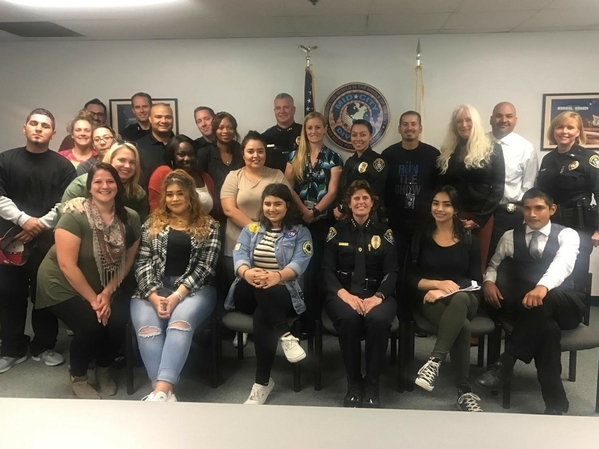
“Youth Voice leaders shared their hearts, visions and perspectives,” says Brown, who founded Youth Voice in 2018. “And the juvenile service officers shared their hearts. They talked about their childhoods, a family member in prison, a parent with mental illness. That’s how [the conversations] fostered such trust. Law enforcement was just as vulnerable as the youth and that built trust.”
Youth Voice involvement since then shows just how far they’ve traveled. “These youth trained 102 international leaders in human trafficking, law enforcement, and community relations from all around the world in ACEs science!” Brown says. She remembers one encounter in particular where a “high-level leader” from Rwanda reached out to one of the teens who gave a training on ACEs, historical trauma and ethics.
“He was asking advice of this 17-year-old youth about healing from the genocide in Rwanda! It was gorgeous,” says Brown. “It’s just a tiny example.”
One important thing to keep in mind, notes Stevens, is that this is not a straight-line journey. If nascent ACEs initiatives are funded too little or too much, their work can slow or even stop, sometimes for as long as a year. If the initiative’s cross-sector organization leadership is controlled by only one organization—especially if it has sole control of funding—it risks moving too quickly for some participants, too slowly for others or in a direction that may not serve the needs of the initiative’s participants. Leadership in the initiative’s participating organizations can change, and often new leaders who don’t know anything about ACEs science will stop all involvement with the initiative and any integration of trauma-informed practices based on ACEs science into their organization.
“It’s the nature of change,” says Stevens, “whether it’s personal or organizational.”
That's why ACEs Connection provides a plethora of tools and guidelines to start and grow ACEs initiatives, and why it launched a Cooperative of Communities for advanced initiatives that are leading the way, says Stevens.
“ACEs Connection staff continued to mine ACEs initiatives to uncover the best—and worst—practices,” she says, “so that the communities in the ACEs movement don't have to repeat mistakes and can take advantage of lessons learned to accelerate their work. One of the most useful tools is the Diversity, Equity and Inclusion Tool, which communities can use to make sure that all sectors and demographics are represented in the initiative. It’s critical to this time to take advantage of the willingness of people to understand racism and to learn to be anti-racist.”
In keeping with the role of community voice, an oft-repeated trope in ACEs initiative work is: “Nothing about us without us!” And it’s one that the Fresno community ACEs initiative put into practice as leadership for the initiative was led by the community-based Every Neighborhood Partnership. The faith-based organization focuses on building partnerships among churches, community-based organizations and schools in every neighborhood, according to Gail Kennedy, who was the community facilitator for Fresno when their ACEs Connection initiative sprang into life. Kennedy is ACEs Connection’s operations and strategic partnership lead, as well as the capitol region facilitator.
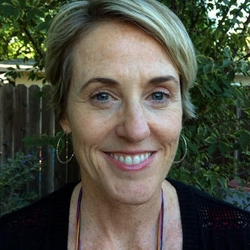
“They have representatives from over 90 organizations across sectors, and their goal is to become a trauma-informed city and county,” she says.
In accelerating action toward that lofty goal, the Fresno County Trauma & Resilience Network, as the initiative is known, has educated many hundreds of people, holds regular healing circles and organizes ACEs science conferences biannually. And, Kennedy says, they have full participation from civic and county leaders: “It’s really grassroots to grass-tops!”
Rafael Maravilla, who took over as community facilitator for Fresno last fall, says the group is in perpetual motion. He participated in one of their trainings about historical trauma, which inspired him to write this blog post about how code-switching, the practice of changing how you use language or express yourself, can be a survival tool for many people. Maravilla participates in weekly conference calls that have upwards of 30 people.
“On this morning’s call, they highlighted how they wanted to create resilience within the schools during and after the pandemic,” he says of a recent call he joined.
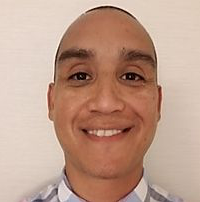
One of the reasons that Fresno has made such headway, says Kennedy, is that they already had in place a bustling cross-sector network collaboration forged by Every Neighborhood Partnership. “And the focus of that collaboration,” she continues, “became addressing trauma and resilience in their communities.”
The ship’s infrastructure was already built, too, for Resilient Solano when Solano County stepped on board to launch their ACEs initiative, says Donielle Prince, PhD, community facilitator for the San Francisco Bay Area. They already had a cross-sector group known as Solano Kids Thrive comprising people in public health, education, and mental health as well as community advocates.
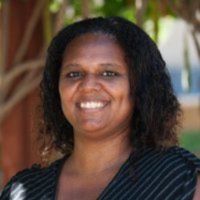
“That’s what allowed them to hit the ground running,” says Prince. She cannot stress enough the benefit of having a multi-sector base to start an ACEs initiative.
To get the word out about ACEs and resilience, Solano Kids Thrive screened the film Resilience in 15 communities to more than 1,000 people, according to Lisa Eckhoff, the director of early learning at Solano County Office of Education, which is part of Solano Kids Thrive. Another 450 people around Solano County have attended 23 ACEs 101 presentations.
And to spread the word further, Resilient Solano plastered billboards and posted ads on buses that crisscross the county, all with the basic message about how the positive influence of an adult can make a difference in the life of a child experiencing ACEs. One showed a mother beaming at her baby framed by the words, “Adversity strikes 2 out of 3 children; 3 out of 3 adults can help.”
Prince is also engaged in helping Vallejo, a city in Solano County, to jumpstart its own ACEs community. The reason for the initiative is that some ACEs advocates want to go local. That’s true for the ACEs champion Jameelah Hanif who runs an association for home-based day care in Vallejo.
“The cities can help accelerate ACEs-initiative work,” says Prince, “because ACEs champions identify with their cities in a way that they might not identify with their counties.”
Down south, ACEs Connection community facilitator Lara Kain is helping the city of Hemet, in Riverside County, develop its own ACEs Connection community, which it has dubbed “Resiliency In the Valley.” Kain says the folks in Hemet have a great relationship with the county ACEs initiative, but they also wanted something more local.
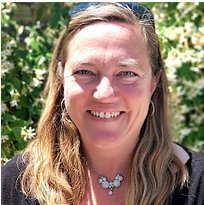
“The group already has a five-year plan and is going to start with building awareness around ACEs science,” says Kain.
Whether hyperlocal or county-focused, that community advocates be movers and shakers of an ACEs initiative was also crystal clear to Resilient Santa Barbara. It was launched in 2018, says Santa Barbara Department of Social Services Children and Adult Network Director Barb Finch, the initiative’s community manager. In 2018, a local philanthropist approached Finch and said they were going to bring Dr. Nadine Burke Harris to speak about her book The Deepest Well, in the county’s arts and lectures program. The philanthropist asked the group if they could promote the event and whether they thought they could fill an auditorium. Finch and her colleagues jumped at the opportunity.
“We actually filled the auditorium and needed two extra classrooms where the talk was live
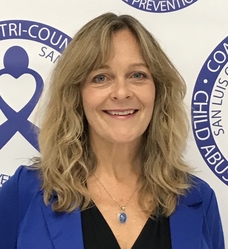
streamed,” Finch says. “And we were able to bring in 40 community leaders to meet with Dr. Burke Harris in closed session before she spoke.”
For that closed meeting, Finch says, she and her core group “prepared a kind of ask.” It went like this: Would the community representatives support promoting universal ACEs screening and becoming a trauma-informed and ACEs-aware organization—and would they support a multi-sector, multi-year plan for organizing this work?
The 40 community leaders were unanimous. “They all endorsed all three of those objectives,” recalls Finch. “And so out of that we formed an ACEs steering committee.”
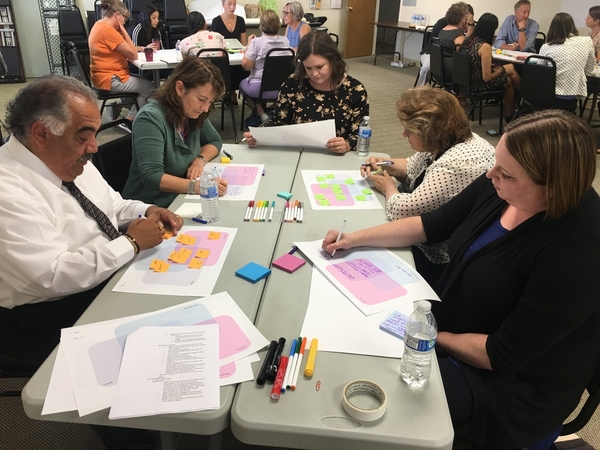
Bringing the voices of those in the community together with decision makers at the state level has in fact been the goal for work in California all along, according to Kennedy. She says that the first statewide ACEs conference in California in 2014 launched participants into action by helping them identify the questions that needed asking of everyone involved.
“[The conference] was really all about the ACE Study and what do we do about it,” recalls Kennedy. The conference was sponsored by the Center for Youth Wellness, founded by Burke Harris, whose TED Talk was already having a ripple effect worldwide.
“And so, we’re trying to figure out how to help support different sectors, how to help support communities, how to raise awareness about it both in our communities and in our professions,” she says.
The conference created a groundswell of interest: Eventually, about 100 organizations all over the state joined forces through the creation of 4CA, the California Campaign to Counter Childhood Adversity, with ACEs Connection, the Center for Youth Wellness, and the children’s advocacy organization, Children Now, all serving as the backbone. Member organizations includes advocates, community-based organizations, and state-level agencies promoting health, education, legal advocacy, and prevention of trauma, abuse and violence.
“One of the things we knew we needed to do was to raise awareness with the legislature,” says Kennedy. To make sure that legislators understand how policies can affect the health of children and families of their constituents, 4CA has participated in policy maker education days, educating legislators about bills that focus on preventing or mitigating ACEs.
Around the same time that 4CA got going, another organization was setting the stage for building out data points about ACEs in California culled from the Behavioral Risk Factor Surveillance System (BRFSS). Essentials for Childhood organized a data group that included Kennedy, Steve Wirtz, now retired, who was with the California Department of Health Care Services, and a representative from Kidsdata, a project of the Lucille Packard Foundation.
The data subgroup had a eureka moment, as Kennedy explains: Might they find other indicators of how ACEs can affect Californians from birth through the life cycle? That’s when Kidsdata jumped into action to develop a treasure trove of indicators reflecting adversity and resilience such as domestic violence calls, bullying/harassment by grade level, parents reports of children’s resilience and school supports by grade level for each county in California, depending on what data is available. (Here’s Fresno County’s dashboard.)
“And then everybody said, we have to have a place where this data lives,” remembers Kennedy. “And we said, well, it can live on [ACEs Connection.] Those datasets, which can be useful for ACEs initiatives to share with local decision makers, explains Kennedy, are also distributed to legislators in Sacramento on annual policy maker education days.
While data is crucial for charting how ACEs and resilience affect children and families over the course of a lifetime, what sustains forward movement on the ground is to keep trust and relationship building front and center. At each monthly meeting of Resilient Santa Barbara, for example, the group starts with a three-minute exercise in small groups of three, according to Finch
“We know that true collaboration is built on trust, and trust doesn’t happen in your pre-frontal cortex; it happens in the feeling part of your brain,” says Finch. “So, what we found is that little exercises build relationships between people who might not ever talk to each other. If we want to be effective at mitigating ACEs and helping our community, we have to have these relationships between and among ourselves.”

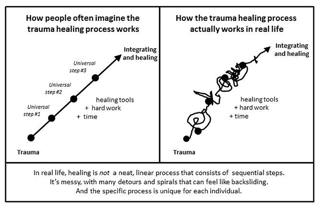
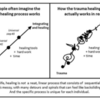
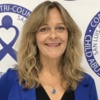








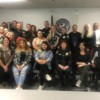
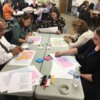
Comments (0)